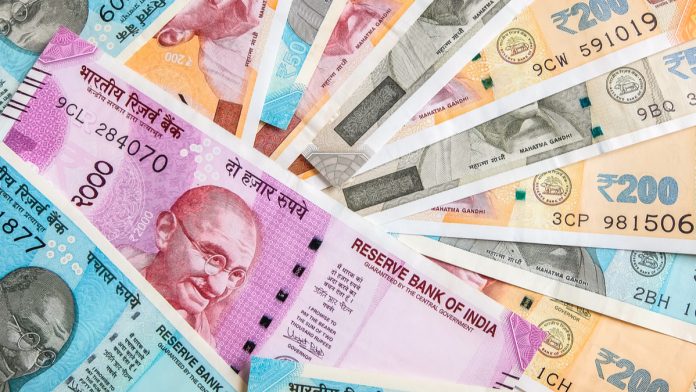- Indian Rupee (INR) slips but set to end the week flat
- Indian GDP strong in April – June quarter
- US Dollar (USD) rises after Fed Powell’s speech
- Rates to stay high for longer
The US Dollar Indian Rupee (USD/INR) exchange rate is rising on Friday adding to gains in the previous session. The pair settled +0.1% higher on Thursday. At 16:00 UTC, USD/INR trades +0.05% at 79.89. The pair is set to end the week approximately at the same level that it started the week.
The Rupee was showing resilience at the end of the week as domestic equities closed flat and oil prices booked small losses.
On the data front, India’s economy is expected to have expanded by an annual 15.2%in the April to June quarter, according to a Reuters survey, owing to a recovery in consumption as COVID restrictions eased and thanks to a weak comparison from the previous year. This would also mark a strong rebound from 4.1% growth recorded in the previous quarter.
Growth is expected to slow in the coming quarters with expectations of GDP growth of 6.2% in the current quarter, then 4.5% and 4.2% in the following quarters.
The US Dollar is rising across the board The US Dollar Index, which measures the greenback versus a basket of major currencies, trades +0.34% at the time of writing at 108.84 after losses yesterday. The USD is set to gain 0.25% across the week.
The USD is edging lower despite Federal Reserve Jerome Powell signaling that the Fed will keep hiking interest rates and then leave them elevated as he well and truly pushed back against any dovish pivot. Doubling down on that message he said that history cautions strongly against loosening monetary policy too soon.
Powell warned that rising interest rates will slow growth and weaken the jobs market, which would mean more pain for households across America.
Powell also said that another unusually large increase in rates could be on the cards for September but this would be data-dependent. There is still another non-farm payroll data release ahead of the next FOMC.





